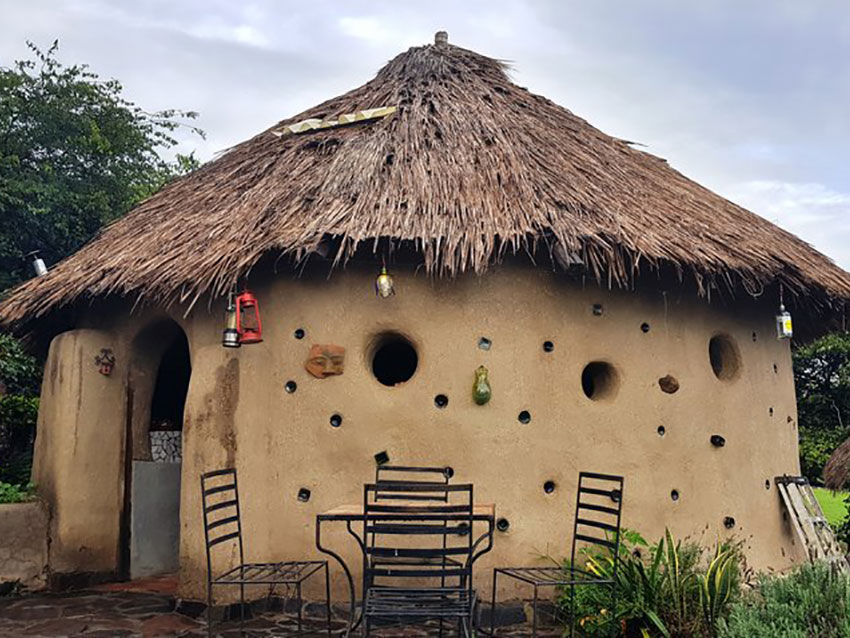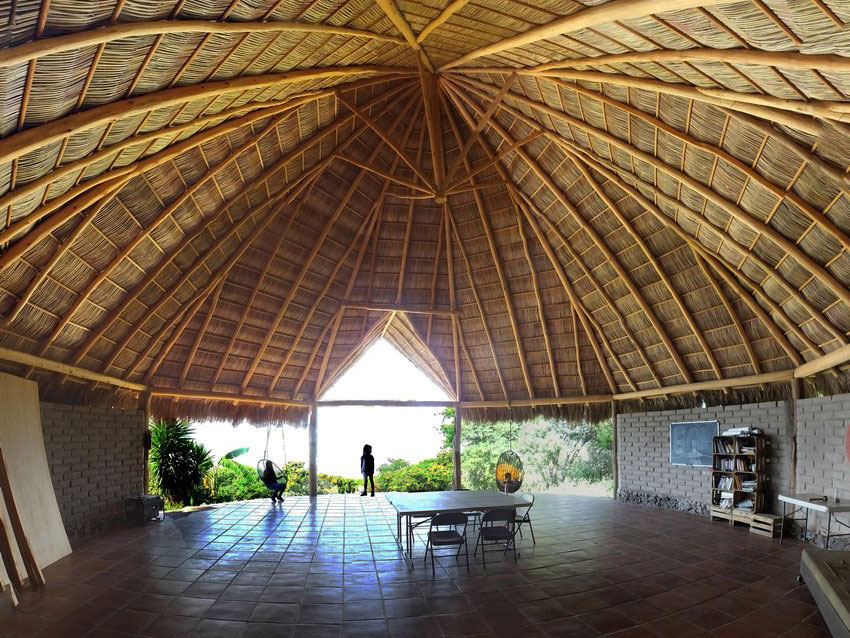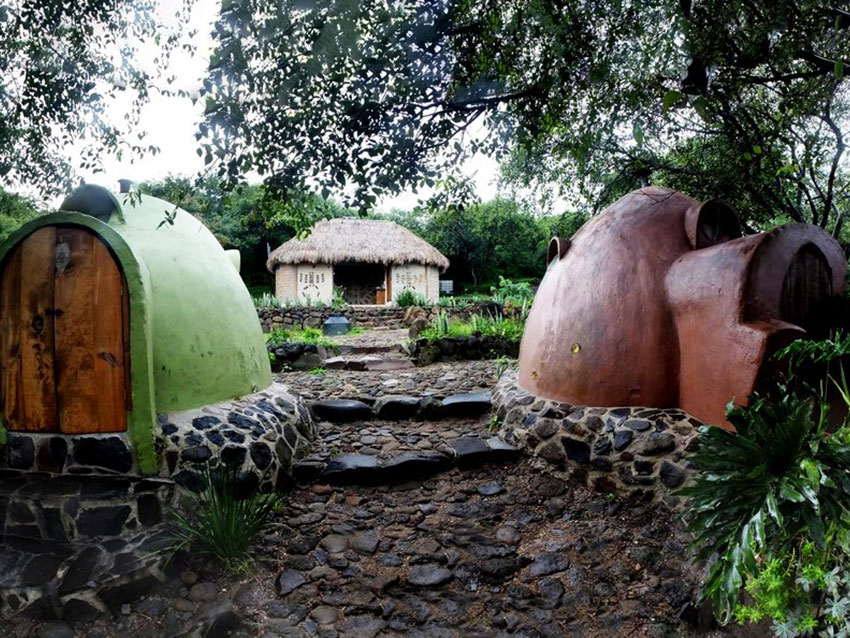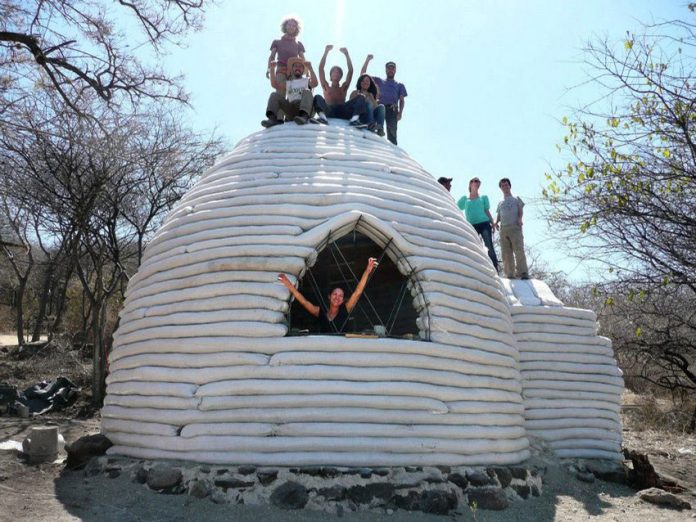A few years ago I reported on a curious eco-training center on Lake Chapala’s south shore called Igloo Kokolo, which looks, more than anything, like a Smurf village.
Here I was introduced to superadobe houses, solar showers, dry toilets, bicycle-operated blenders, recycled waste water and ingenious techniques for living off the grid.
“Igloo Kokolo,” I was told by its owners, Salvador “Chava” Montaño and his wife Jessica Romero, “is really a place for experimentation in alternative ways to live in equilibrium with our environment … and with the creatures we find in it. We are learning through doing, and sharing what we are learning.”
The Montaños’ creation, I felt, was indeed a marvelous example of teaching by deeds rather than by words, but I wondered whether it was going to survive economically, because its income came principally from ecologically oriented people taking training courses in subjects like permaculture and geodesic dome building, along with glamping enthusiasts who had discovered the place on Airbnb and wanted the experience of spending a night in a warm igloo.

The egg-shaped superadobe house was developed by Iranian-born architect Nader Khalili, founder of Cal-Earth, the California Institute of Earth Art and Architecture. Troubled by the ever-growing problem of refugee housing, Khalili searched long and hard for inexpensive building material and construction techniques that anyone could master.
That material turned out to be dirt, feed bags and barbed wire and the way of using them for building was truly revolutionary. Sandbags are filled with moistened earth and arranged in layers or long coils, with strands of barbed wire between each layer to act as both mortar and reinforcement. The builders stack the bags much like a potter stacks coils of clay to make a jar.
The technology has been endorsed by the United Nations and proposals have been made to fill the superadobe tubes with moon and Mars dust for a low-cost solution to setting up the first colonies outside our planet.
When I was offered a chance last week to spend my own night inside one of those igloos, I feared I would find that the place no longer looked as cool as it did when I was last there in 2017 — especially after the hard impact of the pandemic.
Well, I was quite amazed. Igloo Kokolo is prospering and today it looks better than ever!
The brecha (dirt road) to the igloos used to be in such bad shape that even trucks had a hard time negotiating it. Today an impeccably crafted cobblestone road — which looks as if it had been plucked right out of a fairy tale — takes you to a large parking area.

I was then surprised to see that the number of igloos had doubled, a two-story bungalow had been added and the place now boasts a second huge palapa, this one operating as a multi-use center. But the most attractive new addition is a well-designed, four-stall restroom building incorporating the very latest in dry-toilet technology.
I turned to Chava Montaño. “How did you manage to do all this?”
“It was Covid,” he replied. “Everything was closed down everywhere else, so we decided to work full time on all sorts of projects we had only been dreaming about. So, here you can see the results.”
Sorry if I seem to be carried away by sanitarios, but Chava’s restrooms really looked elegant and clean, and they smell great, with not even a hint of unpleasant odor. When the user sits down on the toilet, solids go one way and liquids another, and toilet paper can be tossed right in, something completely prohibido in many Mexican homes.
When finished, the user scoops a mix of dry crushed leaves and black dirt, with a dash of lime and ash added, and sprinkles it down the solids hole. “This dry cover material varies according to what you have at hand,” Chava told me. “Sawdust, wood chips or shredded paper will also do the trick.”
Amazingly, those solids are converted into odorless, high-quality compost, which is removed every three months through a small door on the back side of the building. This can now be used to fertilize flowers, trees and bushes, or it can be set aside to continue decomposing until it reaches the point where it’s actually safe to use in vegetable gardens.

As for the urine, it’s mixed with nine parts of water “and we’ve found it’s the very best thing imaginable for watering your plants,” says Chava. “I just spray it on the leaves.”
Perhaps the cleverest thing in these waterless toilets is the bug trap. This is a bottle, the end of which extends outside the building. Flies and other bugs go into the bottle, attracted by the light, and there they die.
In 2011 water treatment expert Malcolm Sargeant estimated that every day 350 billion gallons of water are flushed through the world’s toilets into city sewer systems and problematic septic tanks and from there carry human waste to our planet’s rivers, lakes and aquifers. How is it possible that the whole world uses precious water for this purpose when such a logical, clean and beneficial alternative exists?
After hiking down to the edge of the lake, we returned to Igloo Kokolo’s dining palapa for a delicious lasagne dinner accompanied by a glorious sunset over the water, complete with dramatic lightning flashes above the north shore.
Later that night, I was handed a light bulb recharged by solar power to hang above my bed, and then, tucked into my little orange igloo, I fell asleep to the chirping of crickets and the hooting of owls.
I find Igloo Kokolo utterly fascinating and from the reports I checked on Airbnb, I’m definitely not the only one. In fact, Igloo Kokolo gets 4.97 stars out of 5, and glowing reviews.
[soliloquy id="125029"]
For example, one of the guests named Christie said: “Igloo is an amazing place using 100% sustainable resources. Salvador earned first place in design for his project and he is a wonderful man with great ideas. The baby donkey, the awesome dog and friendly cat were great companions and the lake views and night sky amazing. The igloos are thoughtfully designed and appointed and very cozy. LOVED everything about it. I would live there!”
And I’ll end with the report of another guest named Gavin: “An amazing experience in a magical place. The dream of all eco-friendly visitors come true. An actual village of beautiful igloos built following sustainable, earth-centered design — safe, cozy, embedded in their natural environment. A great place for yoga retreats, family gatherings, team building or just a romantic get-away to reconnect to each other and to nature. We will go back!”
If you’d like to spend the night in a warm igloo or want to learn how to build one, check out the Igloo Kokolo website or call Chava (who speaks English) at 376-690-0915.
The writer has lived near Guadalajara, Jalisco, for more than 30 years and is the author of A Guide to West Mexico’s Guachimontones and Surrounding Area and co-author of Outdoors in Western Mexico. More of his writing can be found on his website.
